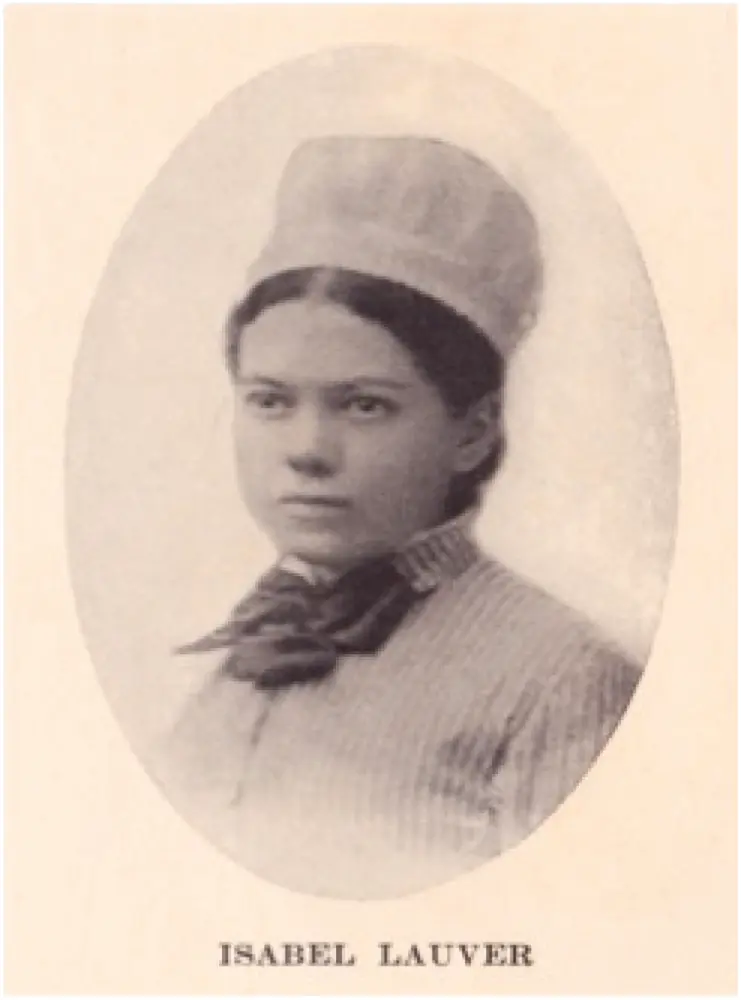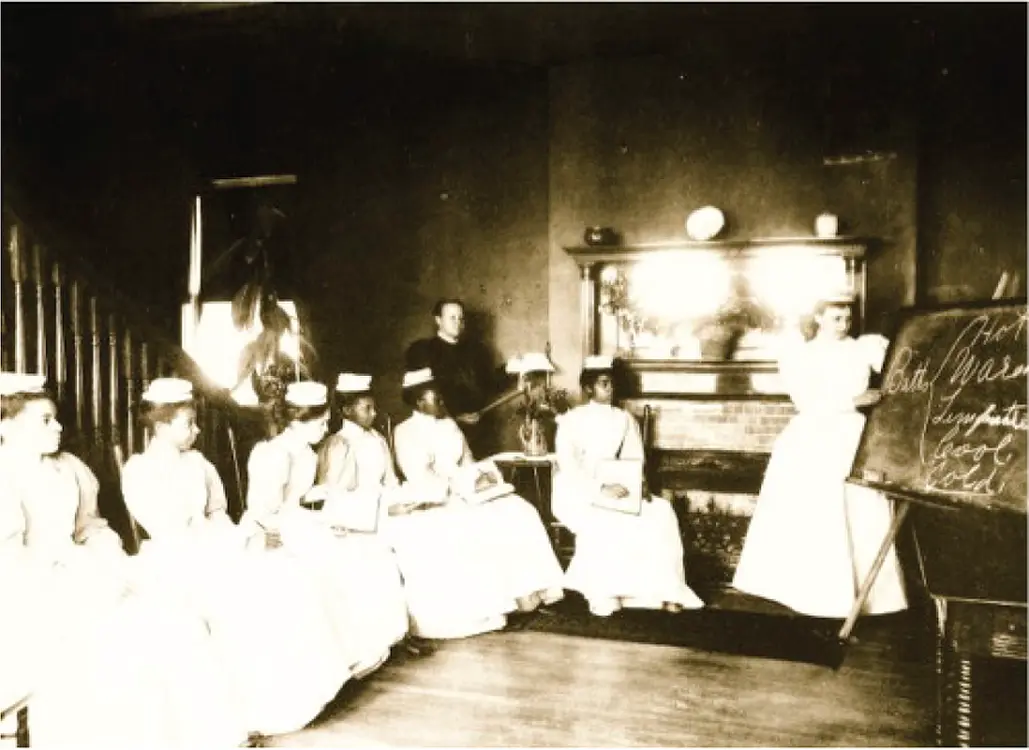Additional factors that demanded trained nurses included the rapid industrialization of the nineteenth century, which caused immense social upheaval. Work environments changed and became increasingly dangerous. Many women had to work outside the home, leaving children, the elderly, and the sick to manage as best they could. Meanwhile, enhanced communication through newspapers, telegrams, and even the telephone informed society of scientific and medical advances.
Evidence from the Literature
Source: Adapted from Holme, A. (2015). Big ideas. Why history matters to nursing. Nurse Education Today , 35 , 635–637.
Discussion:Holme cites a media and public complaint that nurses today, possibly because of a higher level of education, are not as compassionate as they were 50 years ago. Nursing history contradicts this. Just like today, in years past, some nurses were compassionate and others were not. Higher education has not made nurses less compassionate. However, without historical awareness, nurses are not prepared to rebut this perception. Holme argues that it is imperative that nurses know their history.
Implications for Practice:Policy makers might act on this incorrect assumption about level of compassion as they respond to their constituents. Nursing education may then be forced to recede, through funding cuts and other policy initiatives, to the detriment of patients.
Nineteenth‐Century Nurse Training Schools in the United States
By 1873, when the first U.S. nurse training schools were established, science was starting to exponentially expand medical understanding and treatment. Skilled and knowledgeable nursing was necessary. That said, as historian Christopher Maggs reminds us, a lot of nursing was still the work that women traditionally had done but now it was “professional.” Maggs writes: “Only by strict interpretation of discipline, the routinization of rituals and tasks and discussions in textbooks and training about ventilation and sewage disposal could cleaning be inculcated as the ‘science of hygiene’” (1996, p. 23).
In 1880, the Illinois Training School for Nurses was founded by a group of prominent Chicago women along the lines of Nightingale's school in London. The school was not part of a hospital but its students provided care to patients in some wards of the sprawling Cook County Hospital—the city's only public hospital. Cook County paid the Illinois Training School for the students' work through using money saved by dismissing the untrained nurses—“many of them men” (Brainard, 1922).
That last point, that many of the untrained nurses who were dismissed from Cook County Hospital were men, is worthy of discussion. Before the later nineteenth century, there were many men in nursing but early nursing leaders, including Nightingale, considered nursing solely as a women's profession. Nursing, like teaching, was a professional field that women could own and develop just for women. And it wasn't just nursing leaders who wanted only female nurses—a glance through the Journal of the American Medical Association in the 1880s and 1890s indicated that many doctors also only wanted women as nurses (Lusk & Robertson, 2005). For male physicians during this period, female nurses were viewed as having the qualities of good women; they were submissive, obedient, and good housekeepers.
To return to the Illinois Training School for Nurses. In 1905, the first student, Isabella Lauver, remembered her arrival: “Twenty‐five years ago trained skirts were in vogue. My dress was of that style.” The superintendent “having viewed me over she found some pins and shortened my skirt, took a ribbon bow from my hair, and I was ready to go to work… Then the third night it was thought best to take charge of the night work as well as the day, and I was chosen for the first night nurse. What a responsibility!” (Schryver, 1930, p. 23) Figure 3.1.
 FIGURE 3.1 Isabella Lauver.
FIGURE 3.1 Isabella Lauver.
Source: Illinois Training School Collection, Midwest Nursing History Research Center, University of Illinois at Chicago, College of Nursing.
The Illinois Training School for Nurses at that time was responsible for just two wards in the sprawling Cook County Hospital—the female surgical and the male medical, each averaging 50 patients (Schryver, 1930). Apparently, Isabella Lauver did well—she graduated in 1882 after just over 2 years of nurse training. Her first year was spent working on the wards, her second year was spent either in the wards or being sent out as a private duty nurse in the homes of “the rich or the poor” (Schryver, 1930, p. 21). The only actual lectures were given in the evenings by the medical staff after the students had completed a 12‐hr working day. This type of nursing education was typical of nurse training schools of this era Figure 3.2.
 FIGURE 3.2 Student nurses listening to a lecture after work. This photograph is from Chicago's Provident Hospital—a hospital founded in 1891 by African Americans to train African American nurses and physicians because they were not admitted to “White” hospitals.
FIGURE 3.2 Student nurses listening to a lecture after work. This photograph is from Chicago's Provident Hospital—a hospital founded in 1891 by African Americans to train African American nurses and physicians because they were not admitted to “White” hospitals.
Source: Chicago Medical Society (1922). History of medicine and surgery and physicians and surgeons in Chicago . Chicago: Biographical Publishing Corp.
Let us dissect Nurse Lauver's work in terms of management and leadership. Her superintendent described her as a woman of “calmness and common sense sufficient to make up for lack of experience” (Schryver, 1930, p. 24). She had to be! Imagine this young woman as the only nurse for a ward of 50 sick and/or post‐operative patients. And then imagine her as a young woman in 1882, nearly 40 years before women even had the right to vote, leaving her home to start training as a nurse. She was stepping out into the unknown into this new opening for women who wanted something meaningful out of their lives other than being a housewife or a teacher—the only other respected occupations open to women. For the next 47 years, Isabella Lauver worked as a nurse in private duty and in institutions (Schryver, 1930).
M. Helena McMillan, an 1894 graduate of the Illinois Training School, founded Chicago's Presbyterian Hospital School of Nursing in 1903. McMillan, who had a college degree from Montreal's McGill University, planned a curriculum that focused on education rather than service. The first class attracted women from across the U.S. for the three and a half‐year program, which included a six‐month period with no clinical duties. Students needed a high school diploma to enter and one or more years of college were preferred. The school was affiliated with Rush Medical College. In 1903, McMillan wrote: “a special feature of the school is that the pupils will not be overworked.” McMillan was active in professional organizations including being a founding member of the International Council of Nurses in 1899. In Illinois, she spearheaded the passage of the state's first Nurse Practice Act in 1907. Upon her retirement in 1938, the American Journal of Nursing editors wrote that she had been “Associated with practically every progressive movement in nursing” (Lusk, 2001, p. 575).
Compare McMillan's plan for nursing education, as Director of Chicago's Presbyterian Hospital School of Nursing, to the experience of Isabella Lauver at the Illinois Training School for Nurses 30 years earlier.
Читать дальше

 FIGURE 3.1 Isabella Lauver.
FIGURE 3.1 Isabella Lauver. FIGURE 3.2 Student nurses listening to a lecture after work. This photograph is from Chicago's Provident Hospital—a hospital founded in 1891 by African Americans to train African American nurses and physicians because they were not admitted to “White” hospitals.
FIGURE 3.2 Student nurses listening to a lecture after work. This photograph is from Chicago's Provident Hospital—a hospital founded in 1891 by African Americans to train African American nurses and physicians because they were not admitted to “White” hospitals.










